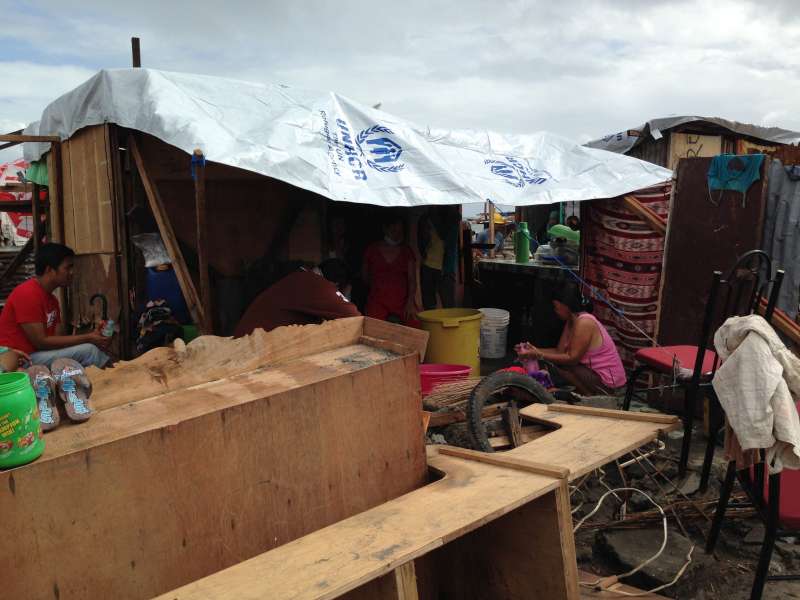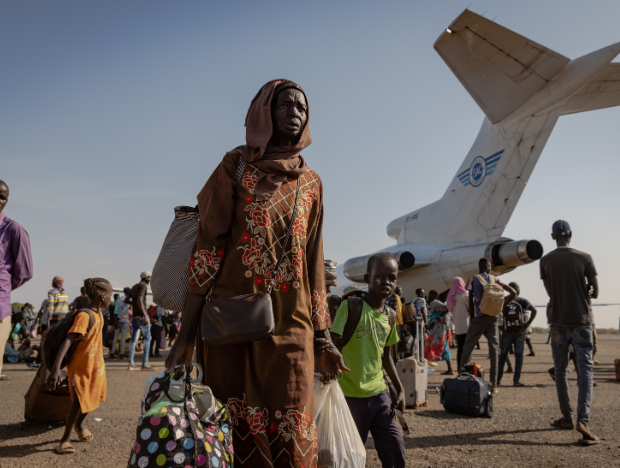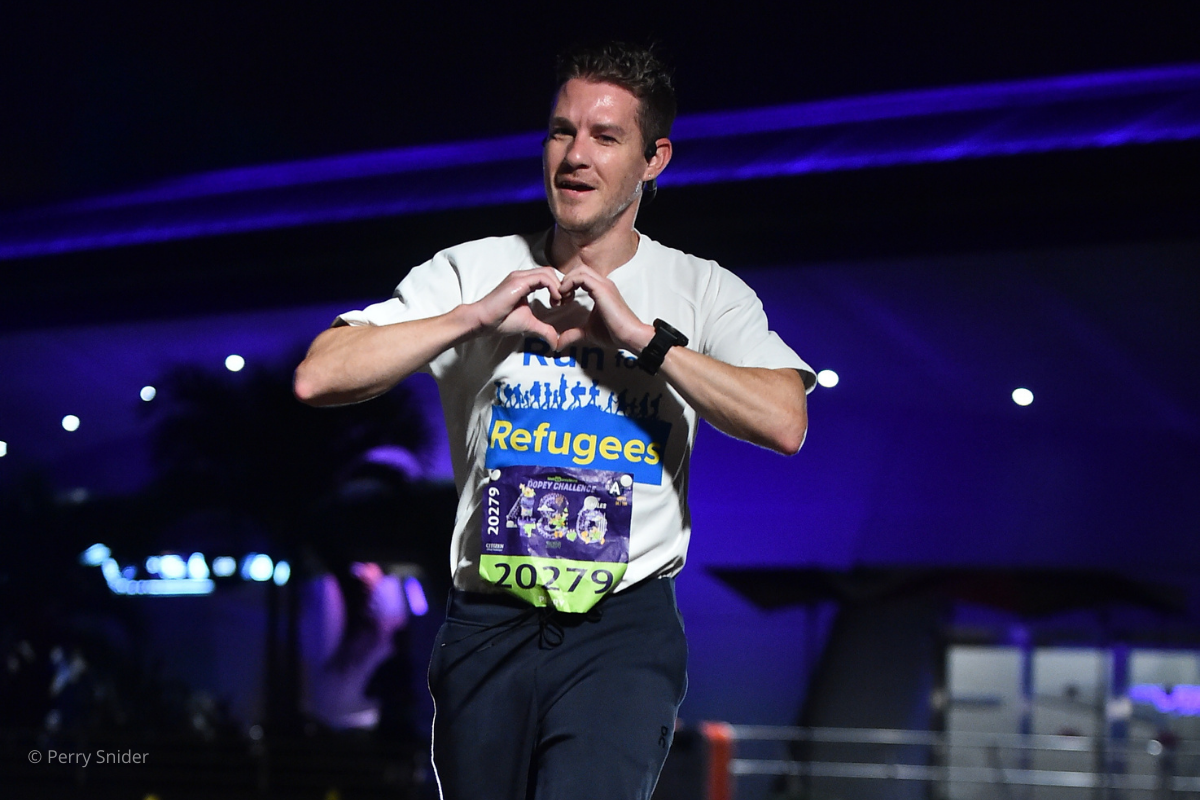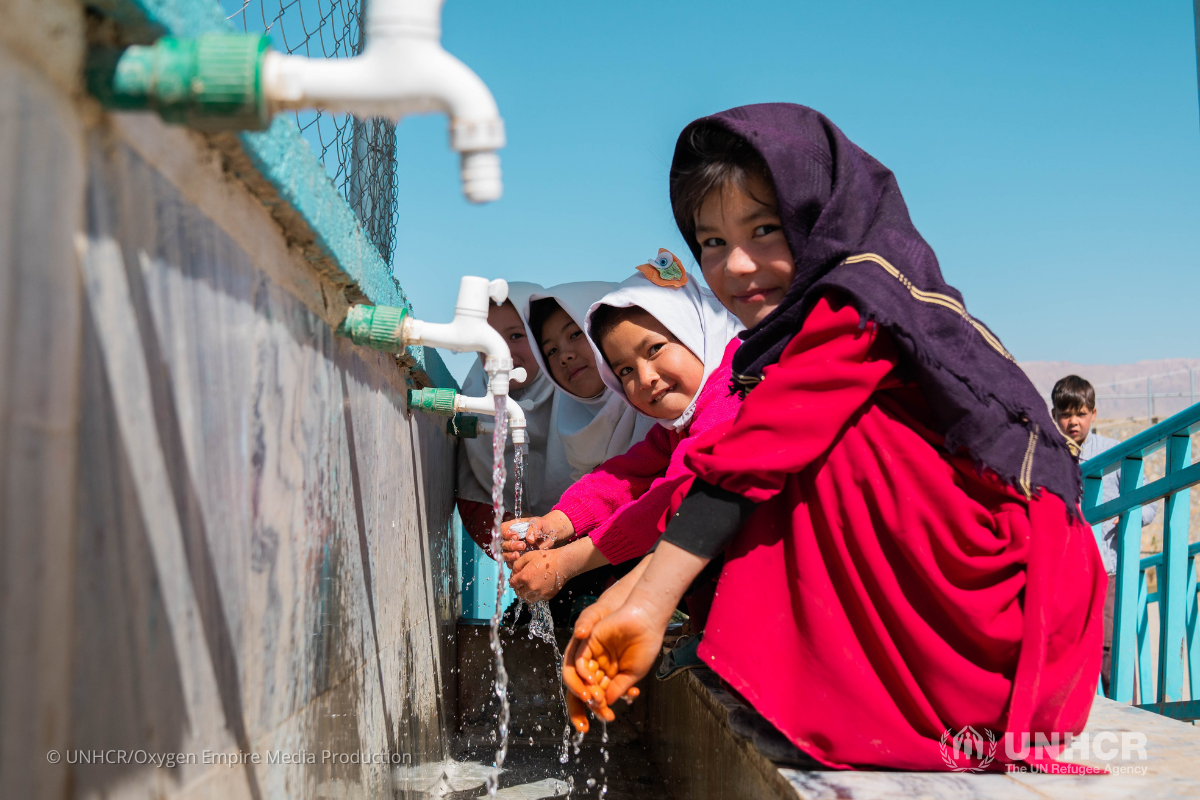UNHCR tarps provide coverage for Typhoon Haiyan survivors
TANAUAN, Philippines, November 18 (UNHCR) – Evelyn Quisaba has lived by the sea most of her life, but now it gives her nightmares. Every night the 53-year-old housewife sits on the ruins of her home, listening as the waves crash against the shore. The louder ones send her running for cover.

Typhoon survivor Evelyn Quisaba (in pink) finds comfort in daily chores at her makeshift home in San Roque, Leyte province in the Philippines. © UNHCR/V.Tan
But she is among the luckier ones. Thousands of people were killed when Typhoon Haiyan swept through the central Philippines in the early hours of November 8. Evelyn and her family survived the high winds and storm surges because they had been evacuated to a gymnasium in advance.
When they returned to their home in San Roque, 45 minutes' drive from Tacloban City in Leyte province, they found only the kitchen counter standing against a flattened seascape. "I was so shocked, I cried and cried," recalled Evelyn.
Within days, the family built a makeshift shack around the kitchen counter using pieces of cardboard and wood salvaged from the rubble around them. The tiny hut is clearly overcrowded for an extended family with 15 people.
"Not everyone can lie down at the same time, so we take turns sleeping. Some of us just sit and doze off if we can. This is not ideal for my daughter-in-law, who will give birth any day now," she said.
Thankfully they still have some food, but otherwise they live on scavenged materials, including clothes they find on the streets and wash before wearing.
UNHCR recently visited this ravaged community on the coast of eastern Leyte to assess their needs and distribute relief items trucked in from the agency's stocks in Mindanao, further south. Some 7,000 people received supplies in the form of plastic sheets, blankets, mosquito sets and cooking utensils.
"The roof leaks when it rains. So I asked for plastic sheets, so the water will stop dripping and we can sleep better," said Evelyn. "This is what we really need. I think this is the most important thing for my family now, so we can have a good sleep."
The plastic sheeting has also allowed her to expand her living space into a covered patio where she cooks and washes clothes. Beside the shack, her son is building more shelters for the large family.
Right beside the sea, another family has set up home beside the remnants of their house. Under a UNHCR tarpaulin, two young mothers sit with their newborns, hiding from the harsh weather that fluctuates between the brutal sun and rain.
"The sheet keeps the rain out, and my husband is building a new house outside," said Brenda Vincito, 20, nursing her baby. She admits the waves scare her, but said they have nowhere else to go. Evelyn, meanwhile, has heard that the government plans to set up a temporary site with UNHCR tents. "I will move there as soon as it is ready," she said, eyeing the sea warily.
To date, the UN refugee agency has distributed relief items to some 15,000 typhoon survivors in the Tanauan and Tacloban areas. It is expanding aid distribution to other affected areas from new humanitarian hubs in Ormoc, on the western coast of Leyte, and Guiuan in Eastern Samar province where the typhoon first made landfall.
As part of the inter-agency emergency response, UNHCR is also supporting the government with protection monitoring and delivery.
By Vivian Tan in San Roque, Philippines


